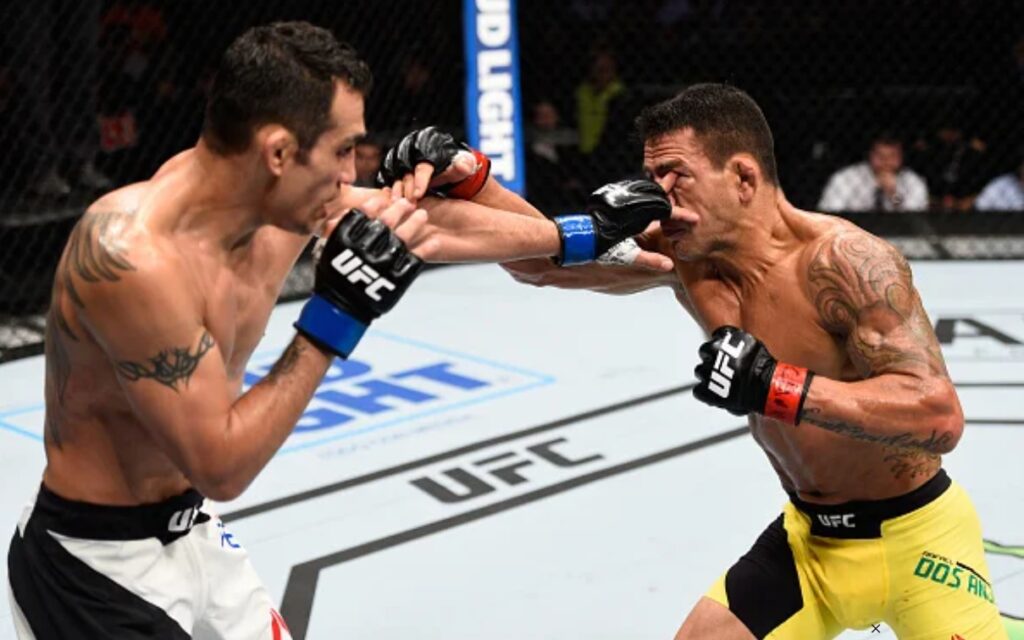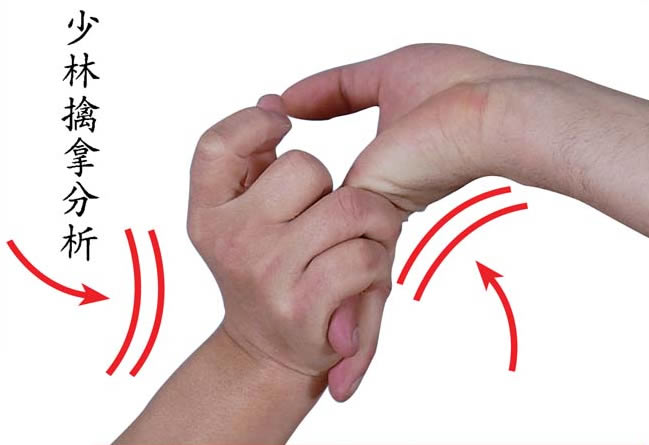UFC 1 originally pitched Mixed Martial Arts as a live, televised version of Mortal Kombat. The producers wanted it to be as brutal as possible, to the point of even considering topping the cage with razor wire! Needless to say, with the lack of established MMA rules at the time, there weren’t a lot of illegal MMA moves. The only restrictions at the time were no biting and no eye-gouging.
However, although MMA can seem pretty vicious from the various damage-dealing techniques, it ultimately is still a sport. As the years passed, UFC rules developed to become more considerate for the combatants’ health and safety.
The list of illegal MMA moves continued to grow, including hair-pulling and groin strikes into the mix. The UFC even began to impose MMA rules such as the Anti-Doping Policy somewhere along the line.
What happens when fighters make illegal MMA moves?
Fighters who step into the cage have the responsibility of knowing the rules the promotion implements. Illegal moves will most probably turn the tables in favour of the offending fighter, but not without cost.
Illegal MMA moves may be unintentional, likely from a sloppy execution of a legal technique. Case in point: a knee to the body during the clinch can easily go too low and hit the groin instead.
In this case, there may be a short break to allow the other fighter to recover from the illegal move. If deemed accidental, a quick reprimand from the referee should stop the fighter from repeating it. However, if a fighter keeps making illegal moves despite warnings, regardless of the intent, the referee may deduct points—or even disqualify the fighter altogether.
-
List of Illegal MMA Moves
As Mixed Martial Arts grew in popularity, more MMA productions began to come out of the woodwork. Each of them established its own set of rules, which explains the variation in MMA rules. Still, there are MMA moves that seem to be universally illegal. Here are a few of them:
-
1 Eye gouging
Eye-gouging is very effective when deterring attackers, but isn’t very applicable in combat sports. It is dangerous and can result in permanent damage, which is why no decent fighter goes out of their way to do it. However, accidents can happen—especially in a high-intensity exchange of blows.
The gloves MMA fighters use also play a role in the frequency of accidental eye-gouges in professional MMA bouts, particularly in the UFC. Pride FC is notable for reducing incidences of eye-gouging simply by using curved MMA gloves. This way, fingers also point downward rather than sticking straight out.
-
2 Headbutting
This is the most controversial illegal MMA move in combat sports. In the early UFC days, headbutts were considered legal inside the ring. At present, headbutts are no longer allowed. Headbutts are a dangerous move that may result in severe head trauma and irreparable damage.
-
3 Hair pulling
Hair-pulling is another move that was perfectly legal in the early days of MMA. Traditional martial artists considered this a valid self-defence technique, and they would use it to change the position of clinching and grappling sequences. But now… just don’t do it.
-
4 Biting
Do we even need to explain why this is considered an illegal MMA move? In the Tyson vs Holyfield match of 1997, better known as The Bite Fight in Boxing, a frustrated Mike Tyson bit his opponent’s ear. This cost him his professional boxing license and $3 million plus legal fees. There is at least one biting case in MMA history so far—this guy who kept biting his opponent and got disqualified for it.
-
5 Groin strikes
Groin strikes are arguably the most commonly-executed illegal MMA move, though they often happen accidentally. One example is during the clinch, where throwing knees to the body is a viable move. When the knee happens to be too low, it ends up hitting the groin instead.
This is why fighters are obliged to use groin guards. As you can imagine, an accidental full-forced strike to the groin will bring you a world of pain.
Will groin guards prevent the pain? Well… no. But it will lessen the severity and damage of it.
In most MMA matches, groin strikes warrant one to five minutes of recovery at the referee’s discretion. If unable to recover within five minutes, the match ends via disqualification or no contest.
-
6 Rabbit punches
A rabbit punch is a blow to the back or base of the head. Any damage to the junction between the head and the spine may cause permanent damage—or worse, even death. Thankfully, this rarely ever happens in MMA. In the rare cases it does, it’s usually accidental hits when on the ground and during a ground-and-pound situation.
Such strikes can be easily missed, so the referee must have a keen eye to catch this.
-
7 Small joint manipulation
While MMA welcomes most martial arts, small joint manipulation is very much on the list of illegal MMA moves. Martial arts that specialize in small joints aren’t very good options to add to the list. (Sorry, Aikido!)
What do we consider small joints? It’s mainly the fingers and toes. These joints are pretty fragile, and take a pretty long while to recover when injured. There are plenty of defences against joint locks when it comes to large joints. Small joints, on the other hand, can snap pretty easily.
-
8 Fish hook
Fish hooking happens when fighters insert fingers in the opponent’s nose or mouth. It’s a very unsportsmanlike move done by bad sports. Even worse when a fighter did it and claimed that the opponent bit him. Thankfully the referee had a keen eye and disqualified the fishhooker instead.
-
9 Piledrive
The piledrive may be better known by its other name—the Suplex. It’s a professional wrestling move (and a very illegal MMA move) that involves picking an opponent up, positioning them head-down, and driving them down to the ground using your body weight. As you can imagine, it has the potential for massive damage and even death, which is why MMA bans it.
-
10 Downward elbow strikes
Also known as the 12-to-6 elbows, this is an elbow strike that starts from the top and drives straight down. The martial arts community regards Muay Thai’s elbow strikes as some of the most lethal strikes. Pair the fighter’s power with the additional force from gravity and you can deal some serious damage to your opponent’s head.
Unlike rabbit punches, downward elbow strikes can only happen when executed with intent.
Here’s the thing, though: it may be really difficult to execute an illegal downward strike. If it’s straight down, perfectly vertical, then it’s illegal. If it’s 11-5? Or a downward strike with any trajectory other than perfectly vertical? All legal.
-
11 Kicks and knees when the opponent is on the ground
Don’t kick a man when he’s down—literally unless you’re looking to get disqualified. Kicking or kneeing a fighter when they’re on their feet is legal. If they go down, though, you have to either step back and wait or go down with them.
The legs may be fair game depending on the promotion, but don’t kick or knee at the head and body when you’re standing and your opponent isn’t. You may use your fists if you can reach them, just make sure not to use your legs. You can generate a lot of kicking power when you’re standing, and a downed target is vulnerable even if they guard with their hands.
Now, if you’re both on the ground, then it’s all fair. You’re free to use hands, elbows, knees, and shins when you’re both on the ground.
-
12 Throat strikes
This illegal MMA move makes sense, though not all MMA productions ban this. A well-executed throat strike can crush a fighter’s windpipe, resulting in life-threatening injuries. Thankfully, even when not banned, you rarely see this in the cage—whether intentional or accidental.
-
13 Grabbing at clothes or the fence
Even if there’s no life-threatening risk involved in grabbing, it is still an illegal MMA move. Don’t grab your opponent’s clothes, gear, or the fence at any point during the match. Referees usually just give verbal warnings for this offence, but you can still land yourself a point deduction if you keep doing it.
-
14 Oblique kick
While the oblique kick isn’t illegal in professional MMA rules, amateur and pro-amateur productions may be less forgiving. The oblique kick is essentially a push kick aimed just above the opponent’s knee. It looks somewhat similar to the stomp kick, though you execute it diagonally rather than vertically.
-
Final Thoughts
Despite the first few MMA events being as brutal as they come (or perhaps because of it), fans found serious entertainment in the sport. The fascination for bloody entertainment that fueled gladiatorial combats remains alive today. In fact, there were probably people who only watched it for the carnage, thinking it had no rules at all.
Thinking about it, bringing martial artists of different styles into the cage seems easy enough. From an operational viewpoint standardizing rules must have been a nightmare to deal with.
Thankfully, since the UFC started modern Mixed Martial Arts as we know it, they became the authority in the sport. While other MMA productions eventually popped up and came up with their own rule sets, the variation is minimal.
It’s a good thing to know which moves are generally illegal, but if you’re looking to compete, do find other references as well! You’ll want to find the specific MMA rule set that applies to your MMA promotion of choice. This will let you maximize your technical arsenal while avoiding penalties at the same time.





